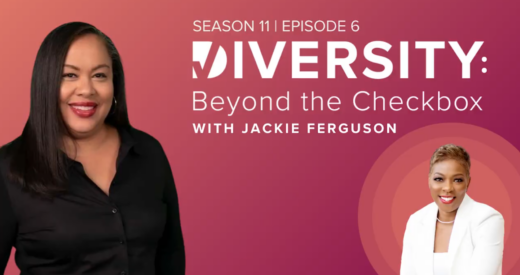Most of us have experienced the embarrassment of a casual remark that inadvertently hurt another person’s feelings. Maybe it was a joke that fell flat or a comment about someone’s appearance. Or perhaps you’ve been on the receiving end of one of these slights. More than petty annoyances, over time these microaggressions can damage relationships, poison workplace culture, and sabotage employee retention.

More than a quarter of Americans have experienced a microaggression at work, and 36% have witnessed one, according to a survey of more than 4,000 individuals conducted by SurveyMonkey in partnership with Fortune. 70% of respondents said they would be upset by experiencing or witnessing a microaggression, with 35% reporting they would consider leaving their job. Additional research is needed to determine the prevalence of microaggressions across demographic groups, but initial findings suggest that Black young adults disproportionately experience microaggressions. With the widespread prevalence of microaggressions and the impact on workplace retention, it’s important to understand what exactly microaggressions are, how to identify them, and how to prevent their harmful effects.
According to Forbes, microaggressions are defined as “brief and commonplace daily verbal, behavioral, and environmental indignities, whether intentional or unintentional, that communicate hostile, derogatory, or negative racial, gender, sexual orientation, and religious slights and insults to the target person or group.” This definition should be expanded to include indignities based on any dimension of diversity, adding ethnicity, socioeconomic status, age, disability, neurodiversity, and more in the mix. Microaggressions can be considered slights against any aspect of a person’s identity.
But what does a microaggression actually look like? Below you’ll find just a few of the most common examples based on different forms of identity.
Race/Ethnicity/Nationality
- “Where are you really from?”
- “Your English is so good!”
- “Is your hair real?” Or, “Can I touch your hair?” Or touching someone’s hair without permission.
- “You don’t act/sound Black.”
- “Are you a U.S. citizen?”
- “Go back to your own country.”
- If you work in retail, following only non-White visitors in your store.
- Asking an Asian person to help with a math or science problem.
Gender Identity

- “I need a few boys to help me lift some heavy boxes.”
- Telling a woman, “You should smile more.”
- “You look like a boy/girl.”
- “Don’t be so sensitive.”
- “Man up.”
- Assigning only women to “office housework.”
Sexual Orientation
- “Is your husband/wife coming?”
- “That’s so gay.”
- “You don’t look/sound gay.”
Religion
- “You don’t look Jewish.”
- “Do you really pray five times a day?”
- Observing only Christian holidays.
Socioeconomic Status
- “You don’t look like you grew up poor.” Or, “You don’t look poor.”
- Assuming a customer can’t pay for a costly item they’ve ordered, and suggesting a cheaper option.
Age

- “Ok, Boomer.”
- Assuming young people are good at, and older people are bad at, technology
- Suggesting that older people are not aware of current trends and lingo.
- Using words such as “energetic,” “fresh,” or “recent grad” in job descriptions. Or, conversely, using words such as “experienced” or “seasoned.”
Disability
- Overly sentimental statements such as “You are so brave” or “You’re a saint.”
- Jokes such as “You got a license for that thing?” Or, “At least you always have a place to sit!”
- Pop culture references such as “Run Forrest Run!”
- Assuming Deaf people can’t see or that blind people can’t hear.
- Speaking down to people with disabilities.
- Talking to someone’s interpreter, aide, or companion, rather than to the person directly.
- Assuming a person’s disability is a negative trait.
Neurodiversity
- “Ugh, I can’t read. I’m totally dyslexic today”
- Referring to people as “normal” or “not normal.”
- Not sending meeting agendas in advance.
- Expecting everyone to be able to participate in a discussion immediately.
Now that we can define and recognize microaggressions, how do we mitigate their impact and decrease their prevalence?

One of the best ways to disrupt a microaggression is to use what we call a “microinterruption.” A microinterruption is an opportunity to pause and note someone else’s, or even your own, biased and discriminatory behavior or language. The goal here is to call attention to the microaggression or non-inclusive action or statement, address it quickly, then move on. For instance, you might question the aggressor’s motives with a simple question, such as: “What do you mean by that?” or, “Will you explain to me why that’s funny?”
Another way to mitigate the impact of microaggressions is to strengthen lines of communication. Encourage employees to alert their direct supervisors to any discrimination, exclusion, or harassment they experience if it’s not work-related, or with Human Resources if it is. And then take appropriate action.
In order to decrease the likelihood of microaggressions happening in the first place, invest in company-wide unconscious bias training. One of the best ways to tackle discrimination is to embed anti-discrimination rhetoric into regularly implemented diversity education. Without understanding the root causes of unconscious bias, efforts for change will be throttled. Hire a certified or experienced diversity practitioner to lead these training sessions and make sure they are available to answer questions before, during, and after the training.
Want to learn more about the ways microaggressions appear in the workplace and ways to stop them? Check out the “Bias” playlist on our MicroVideos platform, named a world-changing idea by Fast Company.
Kaela Sosa, CDE, is Curriculum and Programming Manager at The Diversity Movement as well as one of its founding members. With a degree in Psychology and Gender Studies, Kaela has fought for the visibility and acknowledgement of issues pertaining to underrepresented groups for nearly a decade. Connect with her on Linkedin.






